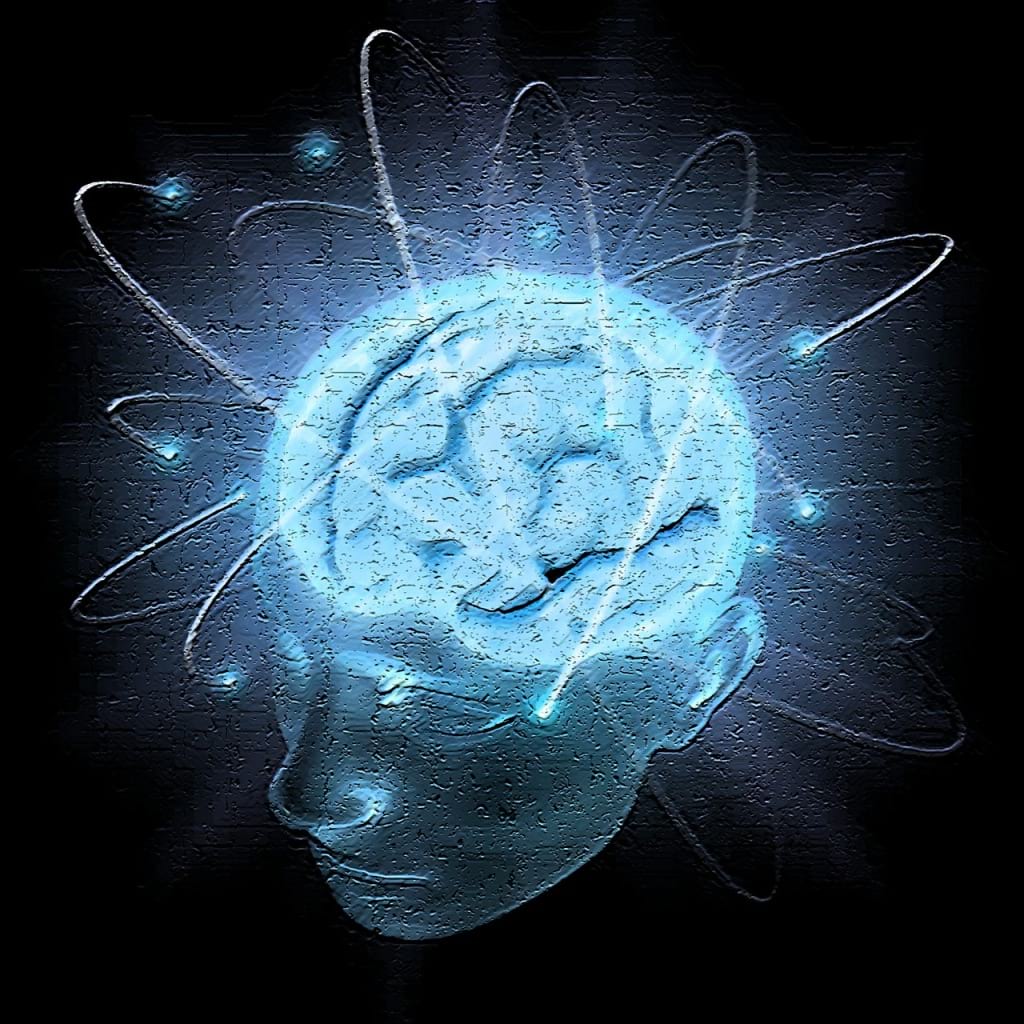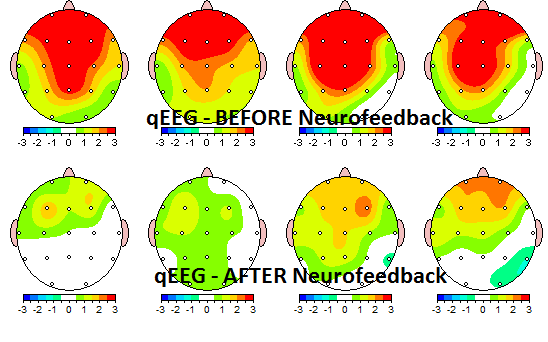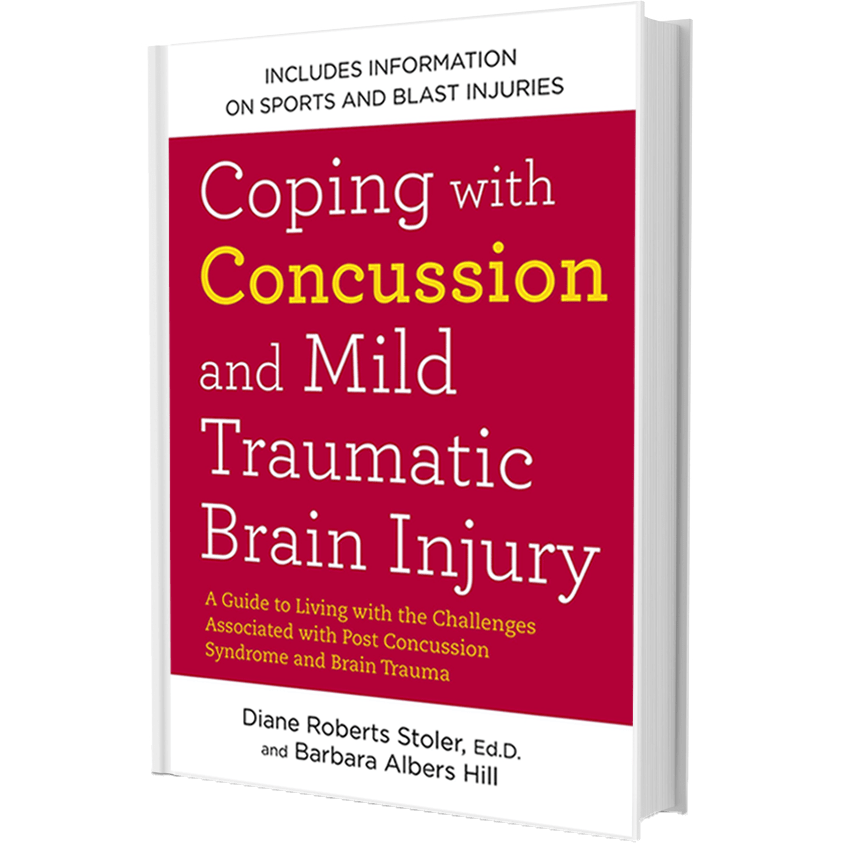What is a Neurofeedback?
Neurofeedback, also known as EEG biofeedback, neurotherapy and brain training, is a subdivision of Biofeedback. Biofeedback is a method of gaining information by monitoring blood pressure, skin temperature, brain waves, heart rate and other body conditions to help promote control over normally involuntary bodily processes through conditioning, also called operant conditioning and relaxation.
Neurofeedback is a technology-based learning technique that provides real-time information about your own EEG activity. Through this type of brain training, a person can alter his or her own brainwave characteristics by challenging the brain to learn to reorganize and by conditioning the brain to function better. The EEG Biofeedback technique is a process in which subtle brainwave information is amplified and shown back to the trainee in the form of a computer game. The object of the training is to re-educate the brain to make voluntary changes via computerized graphic displays and auditory signals that encourage a change in mental state and thus challenge the brain to function more effectively.
How Does Neurofeedback Work?
All forms of Biofeedback employ some type of computer or monitoring device along with electronic sensors to give information about what is going on in the body. When the brain is not functioning properly, evidence of this usually shows up in EEG activity. Just like any other muscle in the body, the brain has the ability to repair itself, also known as neuroplasticity. In order stay physically fit, you would exercise to strengthen your muscles. Similar to this idea, Neurofeedback training helps you get mentally fit.
Unlike an MRI or CT scan that looks at the structure of the brain, neurofeedback assesses brain function through the use of non-intrusive sensors placed in various locations on the scalp. These sensors measure the electrical activity of the brain. An individual plays a specialized video game, the objective being to operate the game by controlling specific brain wave activity. Over several sessions, as the individual retrains his brain activity, he increases his skill level, thereby controlling his brain activity. This exercise strengthens the brain and the rest of the nervous system, with powerful effects on the entire body.
Brainwaves
From the raw EEG, waves are amplified and then refined into smaller parts by the means of electronic filters. Currently there are seven unique frequencies, bandwidths and specific states or characteristics with each bandwidth.
Bandwidths
- Delta 1-4Hz: This is seen in sleep, repairing of the brain, intuition, emotional radar, trauma and unconscious thought.
- Theta 4-8 Hz: This is present in sub-conscious thought, insight, meditative and creative.
- Alpha 8-12 Hz: This is the neutral, peaceful, relaxed state that is the gate that allows flow from restorative sleep to alertness.
- Low Beta (SMR) 12-15 Hz: This is seen in mental alertness, physical relaxation
- Beta 15-21 Hz: This is being present, sustained attention, thinking, focusing, and conscious thought
- High Beta 21-32 Hz: This is hypervigilance, hyper-alertness, extreme anxiety, and PTSD
- Gamma 33-64 Hz: This is integrative thinking, creativity, learning, and the “ah”.
What is Neurotherapy?
What is Neurofeedback?
In both videos, the emphasis is on the brain communicating with itself and the outside world. If you think about how you taught your child or grandchild to speak, first you would present an object, such as an apple. Then you would describe the color, texture, and in this situation, the taste. The fact is that all children are born with billions of neural connections and have the ability to speak and read every language in the world. However, if they are not exposed to that language they lose those neural connections. It is the outside world interfacing with the inner world of neural connections that form specific hubs or pathways. Therefore, a child knowing by sight that a red apple may be sweet while a yellow lemon is sour is based on the formation of specific hubs for that specific object. Along with this hub are other hubs of identification by smell, taste, touch and the situations they experience with the apple, such as a joyful moment with grandma. Then, the child through additional hubs learns to express through language (speech).
How Can Neurofeedback Help My Issues or Symptoms?
When there is a brain injury the system becomes dysregulated, or in other words, the brain becomes stuck in specific brainwave patterns. Retraining the brain can improve many conditions and the various symptoms of stroke/aneurysm, brain surgery, concussion, anxiety, sleep problems, PTSD, Parkinson’s Disease, and movement disorders, such as myoclonic.
Neurofeedback is able to assess brain function and indicate areas where it is not functioning properly, often in the case after a stroke. It can also locate neural dysregulation of the various neural hubs, as seen in a concussion and PTSD. Neurofeedback looks for the cause, such as what specific pathways are dysregulated or over or under activated. Once this type of assessment locates the cause of the symptom, then a wide variety of methods and equipment can be chosen based on what is the best one specifically for your needs and neurological issues.
Clinical Evidence
There is clinical evidence and/or clinical reports on the effectiveness of Neurofeedback for the following disorders seen in children, teens, and adults.
Neurofeedback can help:
The brain’s ability to change, heal and become regulated again is extremely effective in terms of concussion, memory problems, sleep problems, ADHD and PTSD, where the cause is often related to dysregulation of a system of hubs or neural connections and dysregulation of various electrical frequency, rather than injury to a specific location or hub.
Various Forms of Neurofeedback
The goal of neurofeedback is to return the brain to its optimal level. Once an assessment or evaluation has been done, you can use a wide variety of neurofeedback methods to fix a specific area, and/or dysregulation or just fine tune your brain for peak performance.
Methods the Help the Brain Self-Regulate
- Traditional Neurofeedback: This is based on operant condition and help retrain the brainwave to optimal level. Methods include Othmer’s low frequency; Paul Swingle Method; Kurt Thornton Gamma Coherence, Nancy White’s alpha/theta training and Robert Thatcher Zscore training.
- LENS (Low Energy Neurofeedback System): This system developed by Len Ochs is based on restructuring the stuck patterns in the brain and to promote a balance flexible state.
- NeuroField: This system allows the body to engage its own restorative systems so as to return to a balanced, homeostasis state. Specific amplitude and frequency changes can be measured for the purpose of guiding the brain so that it can function more effectively. NeuroField was designed to strengthen the body and promote healthy, balanced states.
- pRoshi (Personal Roshi): This is a light machine used to disrupt inefficient patterns in the brain. The lights flash at a constantly varying speed, helping the brain to “get out of the rut” of current dysfunctional patterns. Infrared light as a healing modality. The infrared light is used to calm the nervous system, reduce spasm and spasticity, relieve pain and reduce inflammation.
- HEG (Hemoencephalography): This measures the blood flow in the brain and gives feedback to encourage blood flow to the targeted regions. This was specifically designed for helping with migraine headaches and depression.
- HRV (Heart Rate Variability): This measures the heart to brain communication to help regulate and bring balance to the autonomic nervous system and limbic system.
- BAUD (Bio-Acoustical Utilization Device): BAUD is device that creates sonic waves that coincide with brain frequencies measured by an electroencephalogram (EEG). By integrating the BAUD as a stimulant with other therapies, such as Neurotherapy or music therapy, the individual can better grasp the significance of regulating their brain waves as well as other psychophysiological dimensions, such as relaxation and indices of mood.
- CES (Cranial Electrotherapy Stimulation): This system produces tiny “microcurrents” which are thought to stimulate the areas of the brain responsible for neurotransmitter and hormone production. Thus, this method is another use to bring regulation to the brain.
- AVS (Audio/Visual Stimulation): Through light and sound in coordination together, this machine is used to bring balance and regulation to the brain.
All of these methods used as part of the neurofeedback integrative approach deal with promoting regulation and balancing of the brain/body system. Neurofeedback specifically deals with frequency regulation and balancing. Neurofeedback, in combination with the various modalities, bring about a synergetic effect for healing and recovery of the brain.
The alpha/theta protocol is used to allow the brain to produce restorative sleep and brain regulations. Proper nutrition is an essential component to recovery. There are specific foods and vitamins that allow the brain to heal, while others can do harm. Finding the proper balance is extremely important. Once this foundation is in place, then locating the area of damage along with areas of strength. If the brain is stuck in a specific pattern then to use methods such as CES, LENS or pRoshi are very useful.




